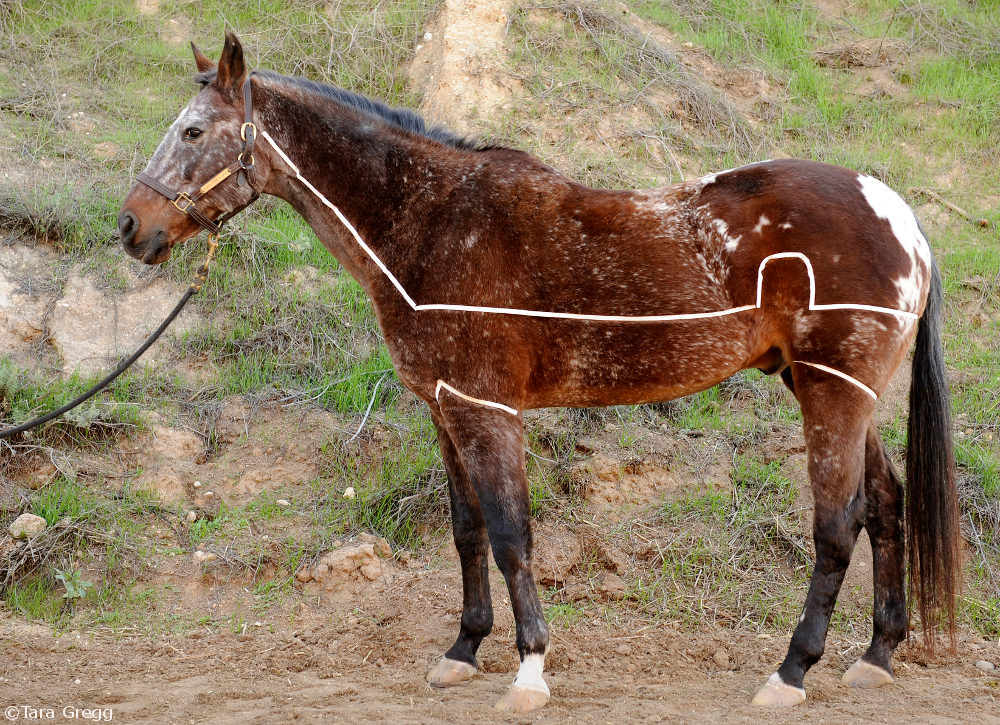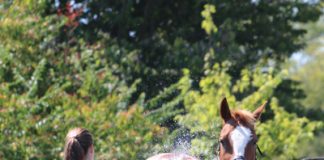
You feel a sense of dread as the days start getting shorter. The air has a distinct new chill to it, and right on cue, your horse sprouts a longer, thicker coat with every passing day.
Prepare to Blanket
Before you think about body clipping, consider how much time you can commit to blanketing. If you board, you must have reliable help to pull off your horse’s blanket on warm days and put it back on when temperatures dip at night.
If your horse lives at home, will you be around to change or remove blankets when needed? A horse wearing a blanket on a warm winter day can overheat and sweat, and if he is partially clipped, the wet hair can cause a chill when temperatures drop again.
You will also need at least two blankets—one lightweight turnout and one mid or heavy turnout. Many people opt to have all three, including at least one hood if you fully clip the neck.
Choosing a Haircut
If you pass the blanketing test, it’s time to decide how much hair to take off from these clipping styles.
Full clip: Clipping from head to toe is usually reserved for horses that compete throughout the winter, as it is a challenging job and leaves no protection whatsoever against the elements.
Hunter: The next stop on the spectrum is a hunter clip, which leaves hair on the head, legs, and often the saddle area as well. Popular among foxhunters, it leaves some leg protection but otherwise requires the same fastidious blanketing routines as a full clip.

Blanket: The ultra-versatile blanket clip leaves the same hair as the hunter, plus a “quarter sheet” of fur over the loins and hindquarters. All the important sweating areas (neck, flanks, girth area) are clipped, but your horse’s back has the extra warmth of his winter coat. Blanketing can be slightly more minimal, although still very important.
Trace: The trace clip is perhaps the most popular partial clip, seen on many cold-weather racetracks and in barns where horses live outside all winter. Your horse may still sweat a bit, but the clip acts like unzipping a jacket, removing hair along the jugular and sweaty areas like the flanks. You can clip a high or low trace, depending on your horse’s situation.
Strip: The strip clip is the most minimal clip style. It removes the hair along the underside of the neck and chest, extending to the girth area if needed.
The Art of the Bath
The No. 1 key to a good body clip is a clean horse. There is no shortcut here—your horse needs a bath to get clean down to the skin. A light sponge-down or rub with a towel will leave too much dirt and dust just below the surface, which will dull your clippers in a heartbeat.
Wait for a warm day or use heated water to really scrub your horse with shampoo down to the skin, and rinse thoroughly. Continue rinsing as many times as needed until the water is running clear.
The dirtiest part of a horse tends to be on top of the hindquarters, so if you plan on clipping this area, pay particular attention. You may even want to take a second pass with the shampoo and hose.
When finished, allow your horse to dry completely before clipping. Apply a light mist of silicone coat polish to help the clippers glide through the hair.
Tools for the Job
Whatever you do, don’t attempt to clip with dull blades or underpowered clippers. You will regret it!
If using rechargeable clippers, you may want to have a spare battery or extra set of clippers to swap to when your charge runs low.
If using one set of clippers for the whole job, always have at least two sets of blades on hand. Body clipping wears them down quickly, and clipping with dull blades takes at least twice as long—plus the blades get uncomfortably hot for your horse. Have a screwdriver handy if needed to switch the blades.
Finally, you’ll need clipper oil and a brush to clean the blades. Blade wash and cooling spray are optional, but will make your life easier when you’re deep into the job and the blades are frequently too hot to continue. A quick dip or blast from the spray and they’ll be ready to go again without waiting.
Get Clipping
If your horse is not accustomed to the larger, noisier nature of body clippers, switch them on and let him feel them through the back of your hand against his shoulder. If he’s OK with the feeling, start clipping on the shoulder, going against the hair grain with the blades flat and parallel to the horse’s skin.
The neck and shoulder are best to do first, since the hair comes off easily and horses are usually comfortable being clipped here. However, your horse may be ticklish around his flanks and under his stomach, so be extremely careful when you get to this point in case he decides to kick out.
Unless you will be showing, it’s best to leave the leg hair intact for all partial clip styles.
Trace a line along the muscling at the top of all four legs early on to “sketch out” where your clip will end. It’s helpful to have a buddy handy to hold your horse’s front leg up and out while you clip the loose skin around the girth area and elbows.
Trace any other borders before you continue (saddle patch, flanks, et cetera). You can use chalk or masking tape, or just walk back and forth comparing the sides from a front view to make sure borders are even.

Take breaks periodically if your horse gets antsy. It could be that the blades are getting too hot, so feel them with your hand frequently, and allow them to cool to a comfortable temperature before continuing.
Finish off with a smaller set of clippers to buzz off the “beard” under your horse’s jaw and any other stray shaggy hairs or clipper track lines that were left behind.
Just remember, the only difference between a bad clipping job and a good one is the two weeks it takes for the hair to grow out a little!
HOLLY CACCAMISE spent several winters clipping foxhunters professionally. These days, she prefers a trace clip for her horse, Artie, in Southern California.
This article originally appeared in the November 2017 issue of Horse Illustrated magazine. Click here to subscribe!






Awesome Article
test Article